Software Development
FossilScope
Fossil Restoration
For over 200 years, paleontologists have been restoring the skeletons of extinct vertebrates based on fossil bones in varying states of preservation. These composite restorations involve the scaling of bones to accommodate specimens of different sizes, the completion of partial elements, and the reconstruction of missing elements. Completed skeletal restorations have been presented as 2D images in scientific reports (Fig 1a) or as 3D skeletal mounts in museum displays (Fig 1b).
In the last 50 years, skeletal mounts based on fragile fossil material have been largely replaced by cast skeletons with internal mounting; and in the last 20 years, advances in imaging (CT scans, laser surface scans, stereophotogrammetry) have allowed for the manipulation and restoration of skeletons as 3D digital models.
However, neither historical nor recent skeletal restoration methods adequately document the myriad decisions underlying the final skeletal restoration.
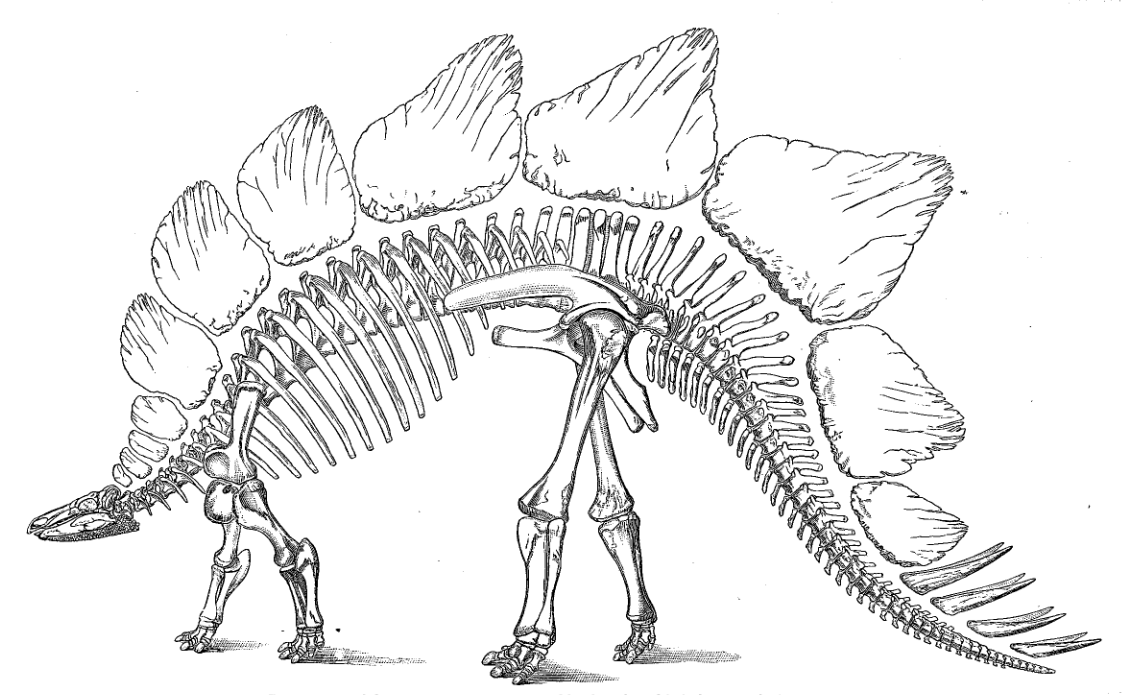 |
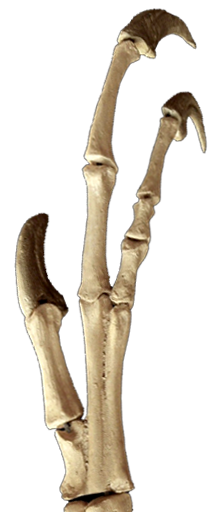 |
|---|---|
| Fig 1a. Skeletal reconstruction of Stegosaurus ungulatus by O.C. Marsh. | Fig 1b. Dromaeosaurus manus reconstruction. |
FossilScope
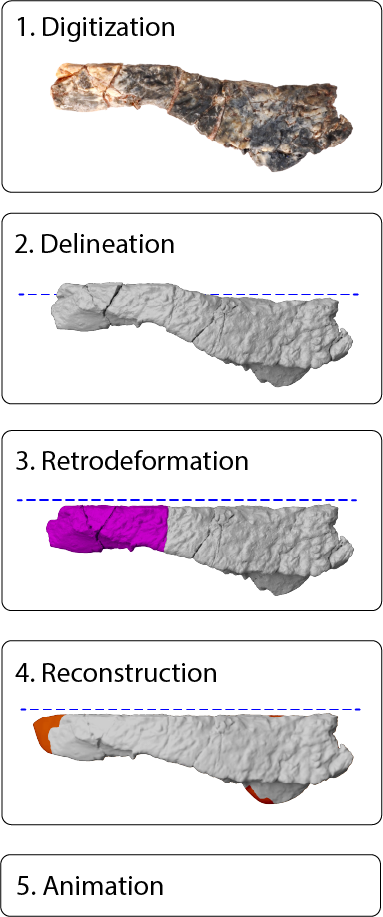
Three-dimensional digital restoration is central to paleontological research today, facilitated by advances in both hardware and software. The workflow for digital restoration of a fossil is as follows (right):
- Digitization via CT, surface scanning, or photogrammetry.
- Delineation through thresholding or masking.
- Brittle or plastic retrodeformation to repair fractures and warps.
- Reconstruction of missing parts and smoothing to repair bone.
- Video animation of the restoration process.
More details on digital restoration here.
Each of these steps can involve numerous decisions and manipulations that are largely undocumented and difficult to reproduce. The digital files for fossil specimens and their manipulations during the restoration process need to be efficiently linked to their representation in the final digital model.
We introduce FossilScope, a free application that will allow the user to directly interact with a 3D digital skeleton and its associated restoration data quickly and intuitively. On a digital skeletal restoration, one may click to select a bone (e.g., femur, Fig 2) or shift-click to select a bone region (e.g., skull) to access relevant information including descriptions and images of the fossil specimens involved, an outline of the restorative steps taken, or a video that animates the restorative process. FossilScope is a new and intuitive way to document and bring transparency to the process of digital restoration.
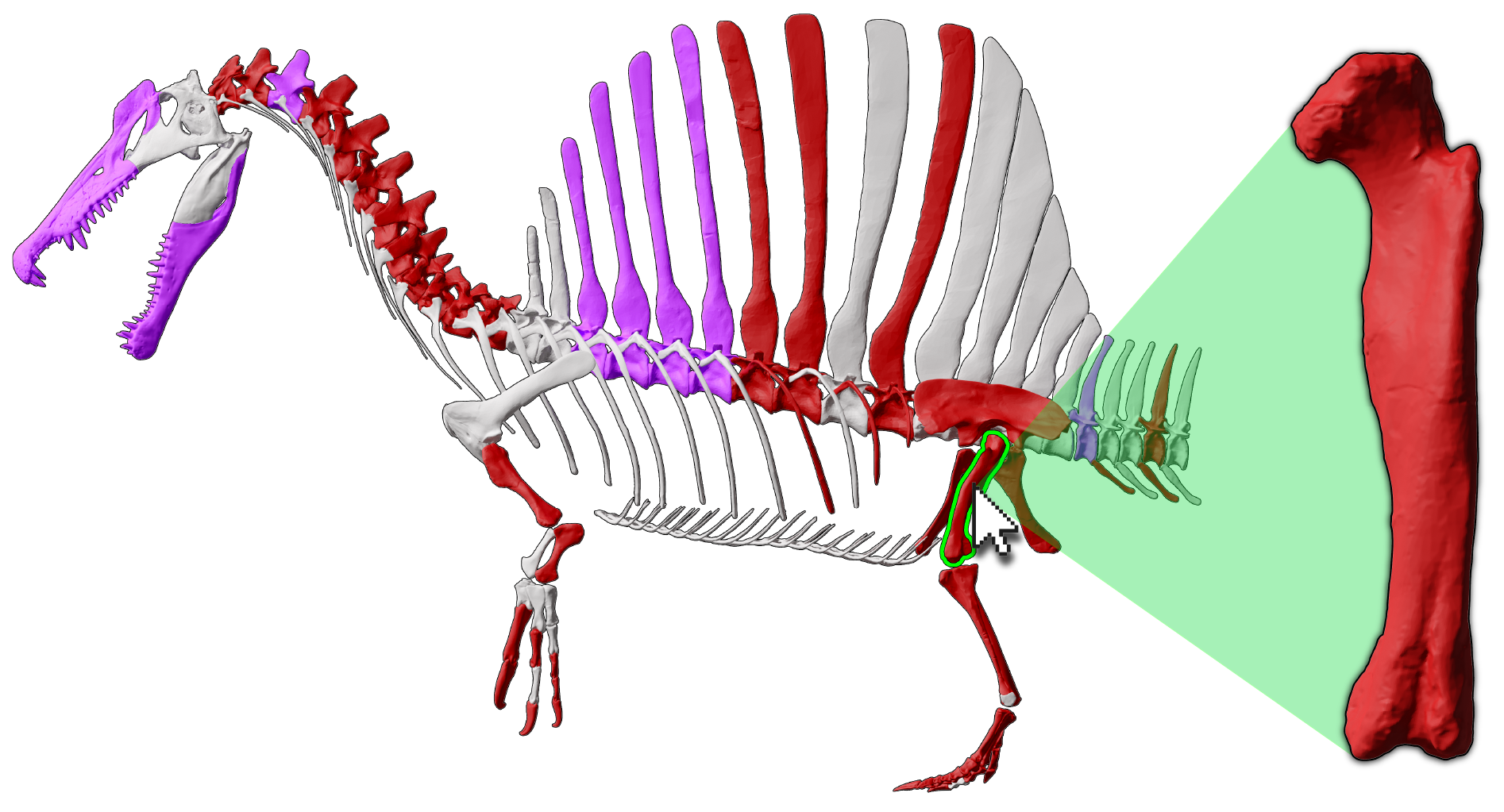 |
|---|
| Fig 2. Clicking to select a bone (left femur of Spinosaurus) for inspection in FossilScope. |
The most recent interactive demo of FossilScope features the flesh and skeletal models of Spinosaurus aegyptiacus. The user can toggle the visibility of the flesh model on or off to access the bones of the skeleton. With the flesh model visible, the user can click on a flesh partition (demo: trunk sail) or the center of mass to view a summary note and relevant statistics. With the flesh model hidden, the user can click on a bone in the skeleton (demo: femur & calcaneum) to view a summary note, fossil specimen ID(s), an outline of the restorative steps taken, and images of the original bone(s) or reference images of a sculpted bone. Bone regions (demo: hind limb) can be selected with shift-click to view a summary note, fossil specimen IDs, and images. Muscles can also be clicked (demo: mAMES = adductor mandibulae externus superficialis muscle) to view relevant statistics and additional notes. Text information can be hyperlinked to take the user to the desired webpage on-click (e.g., paper citation or online CT data). This interactive demo is only the beginning of FossilScope, and we plan to include many more features in the final product.
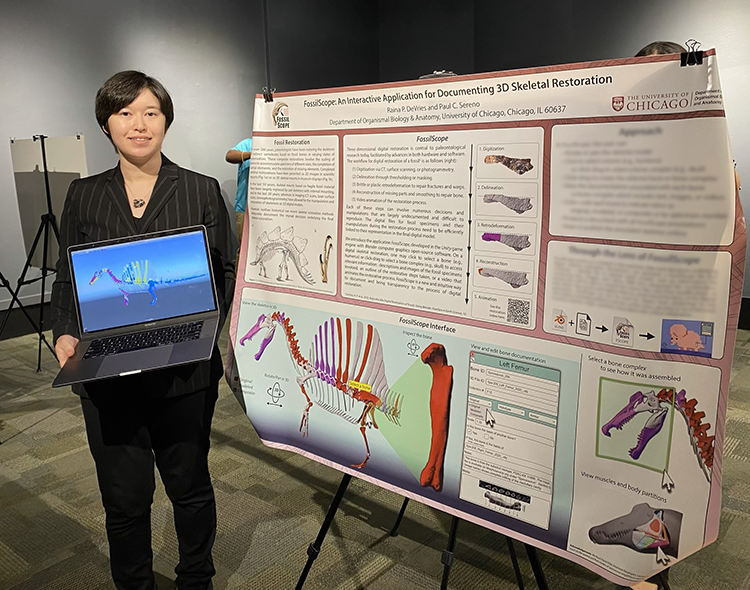 |
|---|
| Presenting FossilScope at the UChicago Darwinian Sciences Cluster Retreat 2023. PC: April Neander |